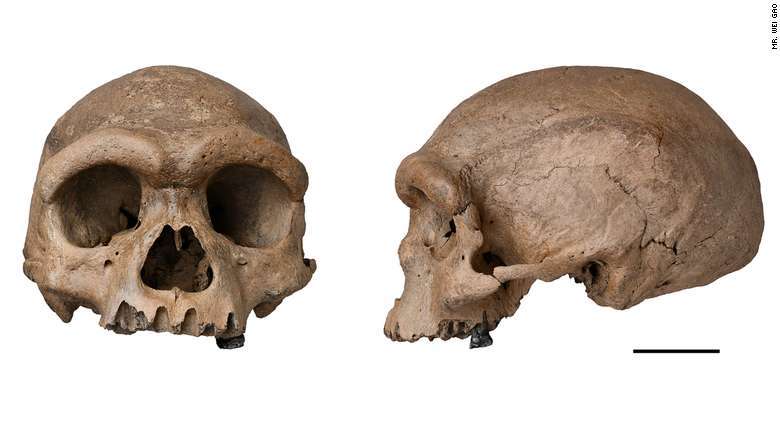A fossil of a humanoid skull found in China that has been dubbed “Dragon Man” is shaking the foundations of what we know about the development of the human species. The skull was found in the Dragon River region of northeast China and is identified as being Homo longi, a species of extinct ancient human theorized to be the closest to our own branch of the evolutionary tree. Now, after being studied, the skull (which is between 140,000 and 300,000 years old) is indeed being called a new species of ancient human. This latest conclusion about the “Dragon Man” will likely change what science understands about how, when, and where we evolved into Homo sapiens.
Videos by ComicBook.com
The Dragon Man skull shows a version of humans with big brains (7% bigger than living humans), thick brow ridges deep-set eye sockets, and a bulbous nose. The skull was discovered during construction in the city of Harbin, China, in 1933. However, it remained hidden in a well for 85 years after a laborer placed it there, supposedly to avoid it falling into the hands of Japanese forces occupying the region at the time. When the laborer died in 2018, he told his family about the fossil and they went to the well he hid it in and retrieved it. The family (which is remaining anonymous) donated the skull to the Geoscience Museum of Hebei GEO University.
The fossil is now causing major debates in the scientific community regarding the scientific conclusions and larger indications of its discovery. However, one thing everyone seems to agree on: it is a significant discovery, indeed. The Harbin skull joins other human skull fossils from places like Peking and Dali, in helping to further the understanding of ancient humans, and what happened to them.

John Hawks, a paleoanthropologist at the University of Wisconsin-Madison told NYT “It’s a beautiful thing. It’s very rare to find a fossil like this, with a face in good condition. You dream of finding this stuff.”According to one co-author of the “Dragon Man papers,” Natural History Museum London paleoanthropologist Christopher Stringer, “It’s distinctive enough to be a different species.”
The picture of ancient humanity continues to get more diverse and complex, with several different sub-species of human theorized or proven to have existed in the same era as Dragon Man. that includes the tall, smaller-brained Homo erectus, the tinier humans like Homo naledi and Homo floresiensis found in Africa and Indonesia, the earliest Homo sapien fossils, Neanderthals and Denisovans. However, Homo longi is now counted as a new entry that could be the bridge link in an incomplete chain of fossils that have confused scientists, by carrying conflicting traits that are supposed to belong to one subspecies or another. Dragon Man’s skull also suggests modern humans may be more closely related to Homo longi than we are to Neanderthals, which would be a big new evolutionary view.
In a news statement Xijun Ni, a co-author of the Dargon Man studies and a paleoanthropologist at the Chinese Academy of Sciences and Hebei GEO University, summed things up with the following:
“It is widely believed that the Neanderthal belongs to an extinct lineage that is the closest relative of our own species. However, our discovery suggests that the new lineage we identified that includes Homo longi is the actual sister group of H. sapiens.”
Source: NYT








